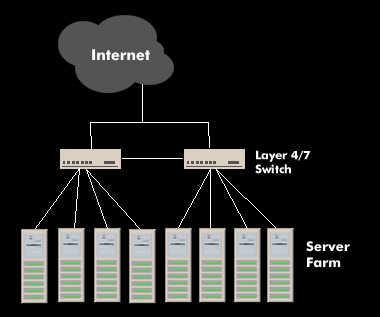layer 4 switch
Layer 4 switching is based on the transport layer and can use the port number in the TCP or UDP header to read individual applications for separate processing. Layer 4 protocols define the application services/protocols transported in the packet. These include File Transfer Protocol( FTP), Telnet, Hypertext Transfer Protocol( HTTP), and many others.
The TCP and UDP headers contain the named port numbers, which describe the data traffic of the higher layers. Using this identifier and the IP addresses of the sender and receiver, the layer 4 switch identifies the data streams of the individual connections and, when using the Resource Reservation Protocol( RSVP), can provide the traffic streams with the desired quality of service( QoS). The service field, Type of Service ( TOS), of the IP header, which codes the classes as Differential Services Code Points( DSCP), is available for this purpose.
The filtered out application flows are assigned to defined Layer-3 VLANs to keep the overall communication in the Ethernet transparent.

